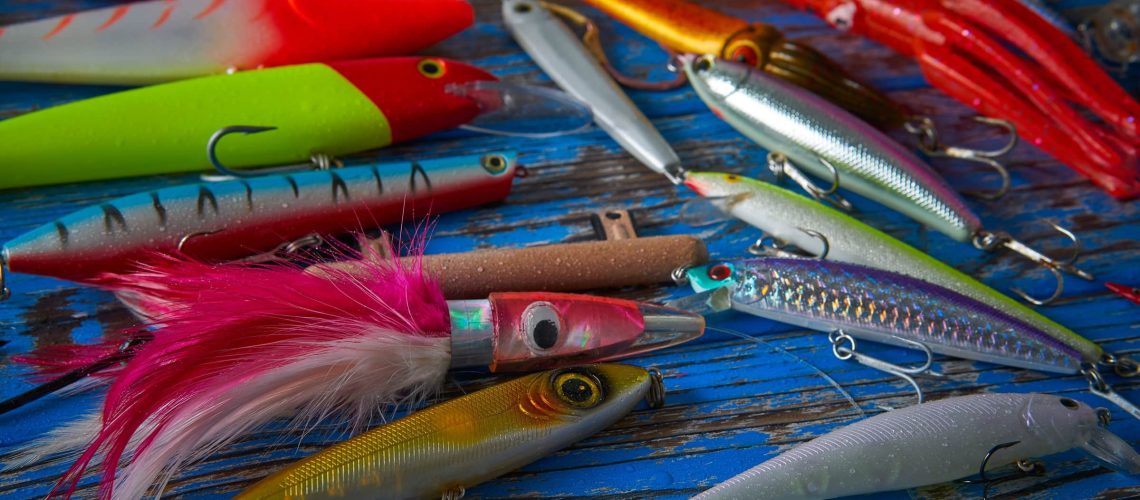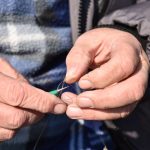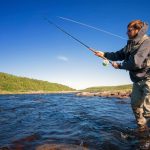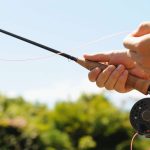For avid anglers, choosing the best lure to catch fish is vital to the process. A fishing lure refers to a type of artificial bait used for attracting fish. Lures come in various shapes, size, and colors. Each type is designed to attract a specific range of species. It is important to note that the effectiveness of each lure may vary by fish species. Since there are many fishing lures to choose from, choosing the type that works for you might be daunting. Exploring the different types of lure will be your starting point.
The benefits of using fishing lures:
- Lures enable you to cast much further than using live baits.
- Unlike live baits, lures are less messy.
- Lures are designed for catching and releasing.
- Lures give you more opportunity to catch a specific species of fish.
- You can easily interchange lures.
When going on a fishing trip, lures can be your best friend when used correctly. They can be used in both saltwater and freshwater. They are also suitable for a wide variety of species.
Jigs
This type of lure has a hook on one side and a weighted head on the other. It comes in different forms. Some have a feather skirt while others have a plastic grub. This type of fishing lure is popular among anglers because of their weight which enables them to sink easily. They are suitable for bottom feeders.
You can make the most out of jigging lure when you take advantage of its weight. You have to cast it out and allow it to sink to the bottom of the water. An indicator that the jig has sunk is when you notice the line go slack. You should start jigging at this point by lifting your rod up slightly, retrieve the line and start lowering it again. There are different speeds that you can experiment on.
Plug
Plugs are also referred to as crankbaits. They are hard plastic fishing lures which bear the strongest resemblance to bait fish or other types of prey. They are made from a hollow or solid piece of plastic. It consists of a thin sheet of plastic or metal which is called a lip attached to the front. You can also adjust the lip so you can wobble the lure. The plugs also have two or three treble hooks. The plugs can dive, sink, float, or hover depending on its design.
When fishing with a plug lure, reel-and-stop moves will enable you to imitate the behavior of live bait. It is also important to change the reeling speed and twitching intervals so you can achieve better results.
Spoons
This artificial lure is curved, concave lures made from metal. Spoon lures derive their name from spoons as they shape like one except the handles are cut off. As they move through the water, the concave shape allows them to wobble and shine. Lures will have a wider wobble when the curve is bigger. A wobbling lure looks like an injured baitfish that game fish cannot resist.
When using a spoon lure, you can either cast or troll it. When casting it, going for 10 to 20 feet below your target zone and retrieving the lure is the way to go. If you want to know the right speed for retrieval, taking a good look at the spoon when moving will give you an idea. Spoon lure requires downtriggers when you are trolling with it so you can set the depth you desire.
Spinnerbait
This type of lure moves horizontally, which makes it different from other lures. You can choose from different shapes and colors depending on the species and depth you want to target. Spinnerbaits feature a skirted hook on one side. The other side has more metal blades which resemble a propeller when it spins. When the blades spin, it will create a color reflection and vibration to imitate baitfish like minnows. Spinnerbaits are ideal for catching Perch, Bass, and Pike.
When fishing in clear waters, simply pull your spinnerbait beneath the surface so you can attract game fish. The spinning blades’ visual effect will continue to lure a lot of fish. Be sure to keep your rod high and the blades should be beneath the surface. If you are going to use the spinnerbait in murky water, this technique will not work. You need to add a sinker and let the vibrations of the spinnerbait lure attract fish.





